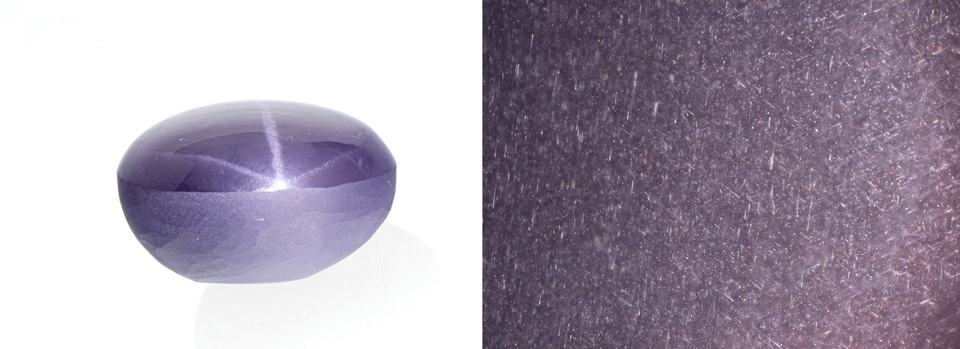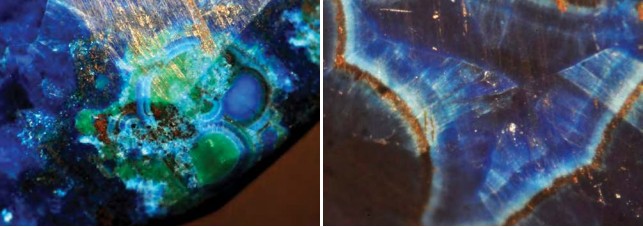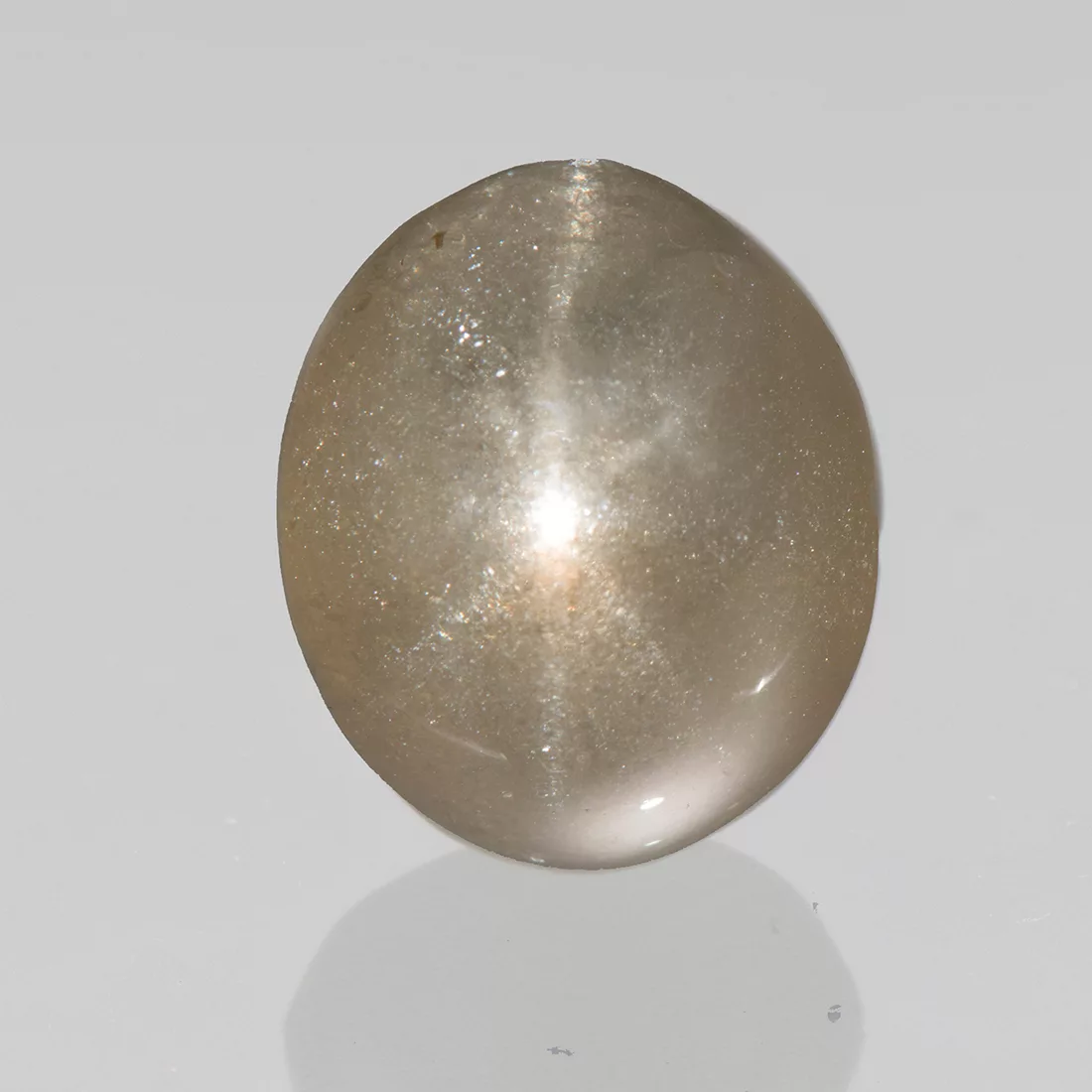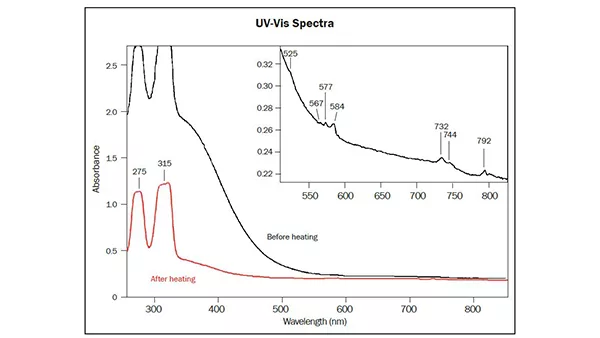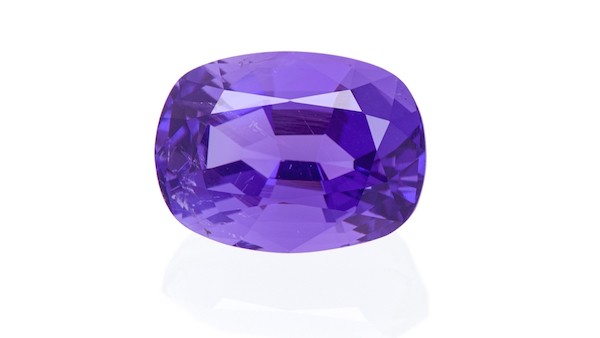
Purple love
By Dr. M.S. Krzemnicki, first published in Facette 28 (May 2023)
It is always a pleasure for our team to analyse gemstones which are not so common, or sometimes even very rare, but which may compete in beauty and quality (but often not in hardness) with the most prestigious classic gemstones. In the past few months, we had the opportunity to analyse a number of rare and outstanding gemstones of purple colour, some of which are presented in the following.
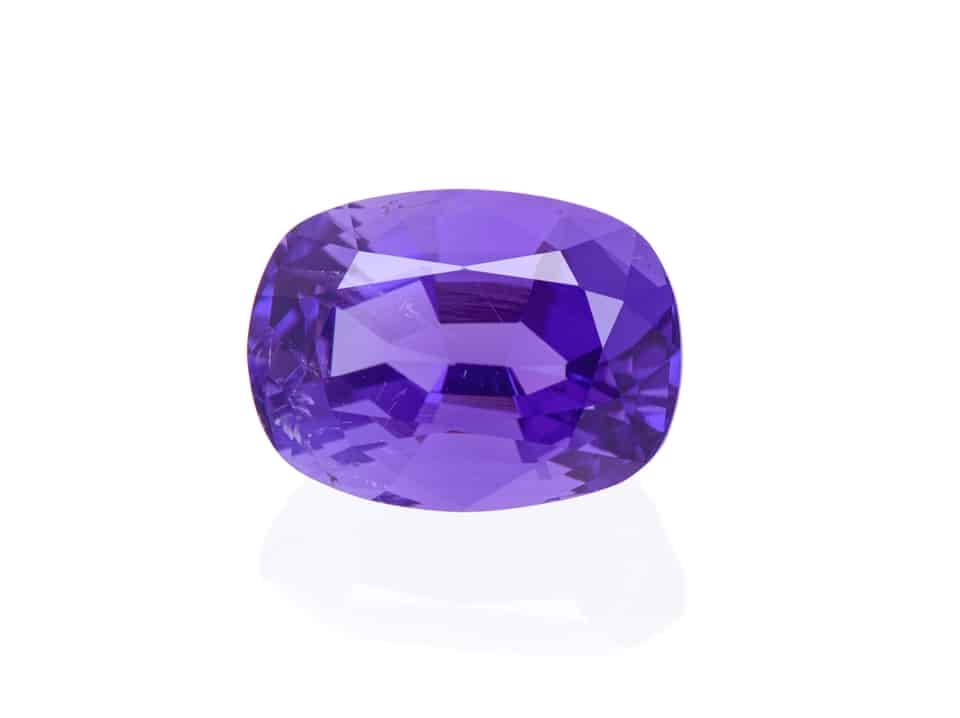
The first example is a transparent faceted hackmanite from Afghanistan of nearly 9 ct. Hackmanite, a variety of sodalite, is known for its striking colour shift from whitish grey to intense purple when exposed to ultraviolet light. Normally, this colour subsequently fades again over time, but can be re-established indefinitely. This property is known in scientific literature as tenebrescence, or reversible photochromism.
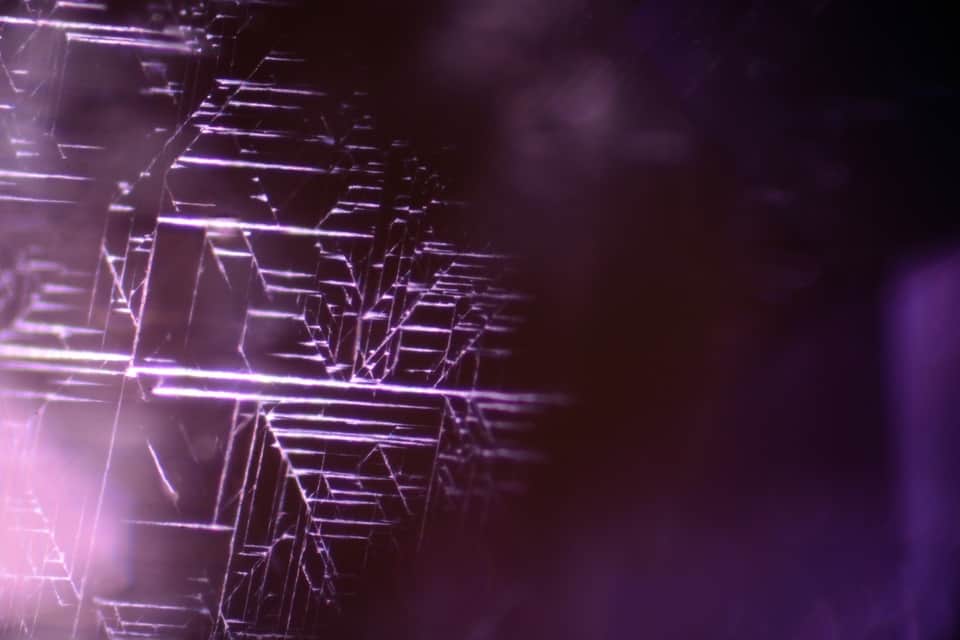
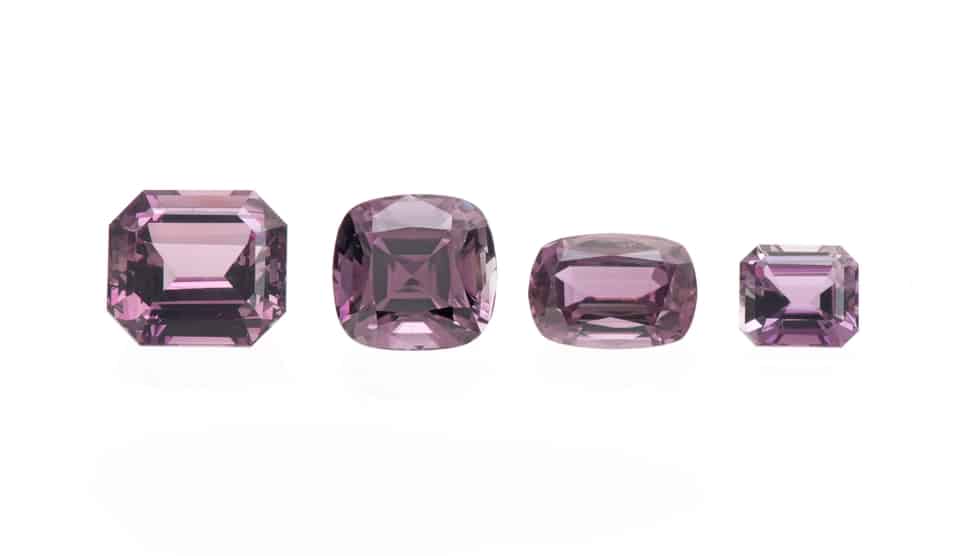
Diaspore, with a chemical formula of AlO(OH), is known in the gem trade since decades from the Milas District, Mugla Province, in SW Turkey (e.g. Schmetzer & Bartelke, 1979). These stones show an interesting colour change from olive green in daylight to brownish in incandescent light. Purplish pink diaspore has been found first in limited quantities in Mong Hsu in Myanmar (Kyi & Win, 2004) and recently in larger sizes and quantities in the Nangarhar Province in eastern Afghanistan (Nicastro et al., 2020). SSEF received a series of four diaspore for testing (Figure 3), all of similar purplish pink colour and of outstanding clarity. The stones showed a distinct red fluorescence in longwave ultraviolet light due to traces of chromium, and a distinct yellowish chalky reaction under shortwave ultraviolet light, as characteristic for this new material from Afghanistan (Nicastro et al. 2020, Milisenda & Wild 2021). Chemical and absorption spectroscopy analyses confirmed the combination of traces of chromium and vanadium, as being mainly responsible for the purplish pink colour of these stones.
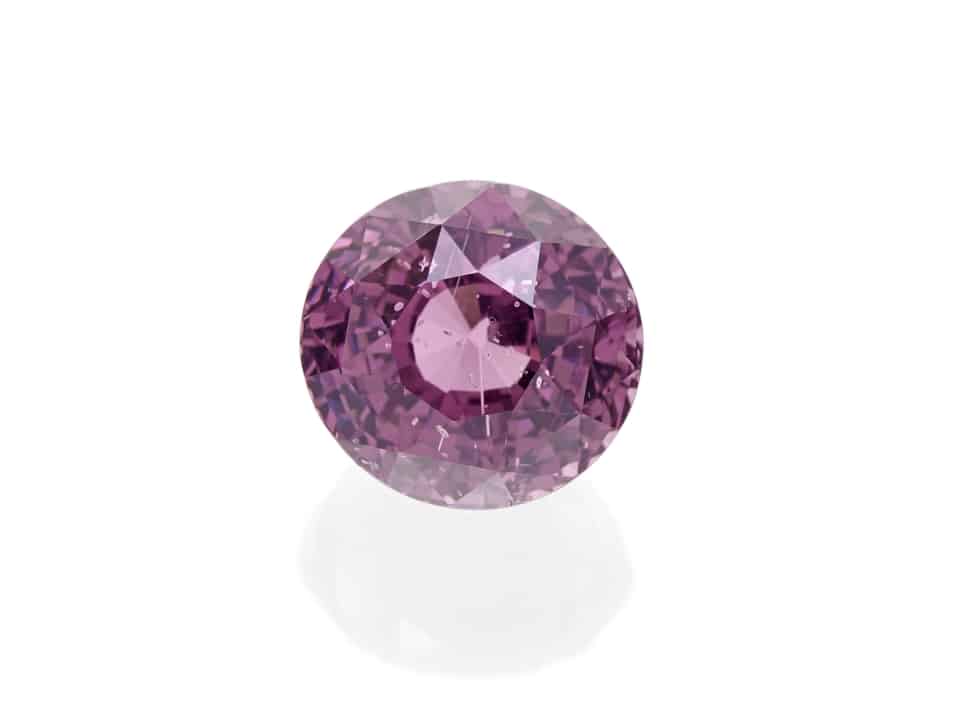
One of the most outstanding purple gems encountered at SSEF in the past few months was definitely an exceptional taaffeite of 39 ct, reportedly originating from Sri Lanka (Figure 4). Known and sought after as a collector stone, taaffeite, ideally BeMg3Al8O16, was named after Mr Richard Taaffe, who by chance discovered the first specimen of this mineral in 1945 in a jewellery shop in Dublin (Ireland). Due to its visual appearance, the specimen was offered to him as a spinel and only after his lucky discovery described as a new mineral species. Taaffeite forms a mineral group together with musgravite, another exceedingly rare mineral and gemstone from which it can only be separated by sophisticated analysis. Detailed Raman spectroscopic analyses and trace element analyses (GemTOF) clearly revealed that the described gemstone is a taaffeite, owing its attractive purple colour mainly to iron, similar to purplish spinel (Andreozzi et al. 2019, Lhuaamporn 2022). Interestingly, chromium which is known as a contributing colour cause in pink to purple taaffeite (see also Facette 2021, No. 27, pages 14-15) is present only at sub-ppm level in the described gemstone, thus certainly not contributing to its purple colour. When exposed to longwave ultraviolet light, this taaffeite exhibits a weak green fluorescence, similar as observed occasionally in spinel (Krzemnicki 2023) and commonly attributed to traces of manganese (about 800 ppm Mn in this specimen).
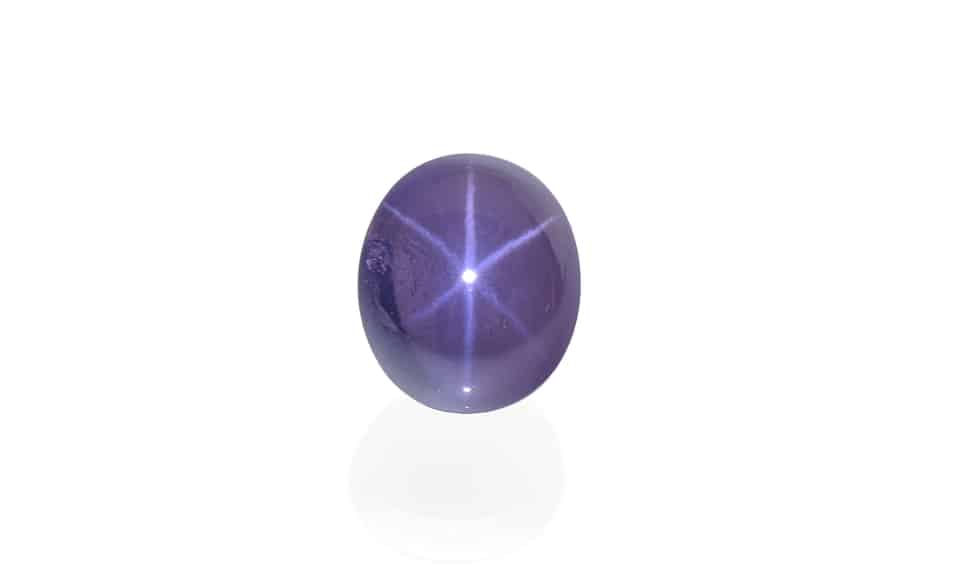
The last purple specimen described in this short note is an exceptional spinel with an attractive 6-rayed star effect submitted recently to SSEF (Figure 5). The star effect, also known as asterism, is a reflection effect on tiny oriented inclusions dispersed in the gemstone. Its visibility and pattern (e.g. 6-rayed or 4-rayed) after having been cut into a cabochon is directly linked to the amount, shape and orientation of these tiny inclusions, often small needle-like solids of fluid-tubes.
The described purple star spinel is outstanding in size and weight (40 ct) and has been perfectly cut to show a well-centred 6-rayed star (Figure 5). When rotating the stone in all directions, similar 6-rayed stars are visible at the end of each of the six branches, indicating a complex three- dimensional pattern of inclusions to enable such multiple star effects within one single stone (Figure 6). In addition, our analyses revealed that the colour of this purple star spinel is related to a combination of iron and chromium.
